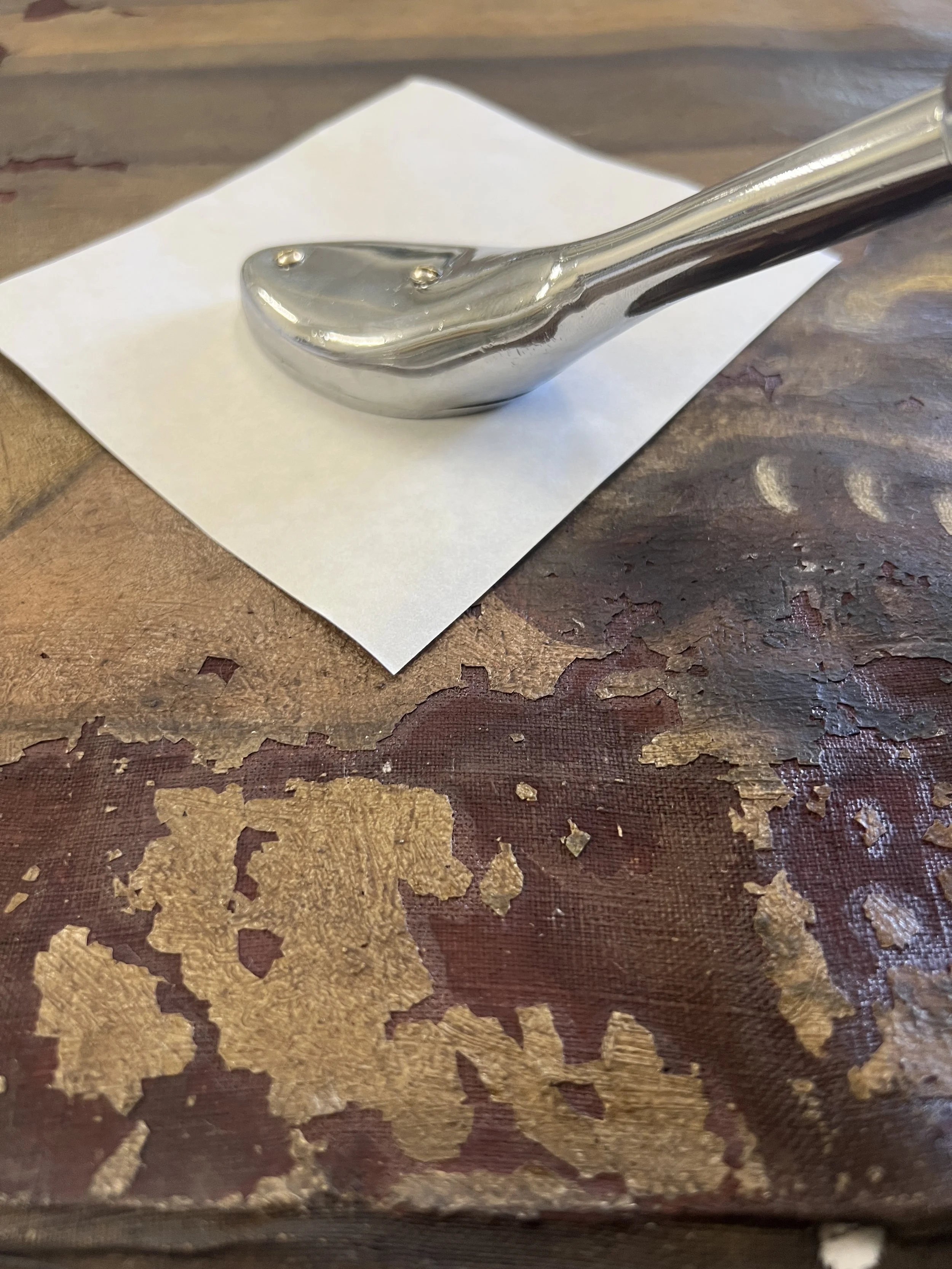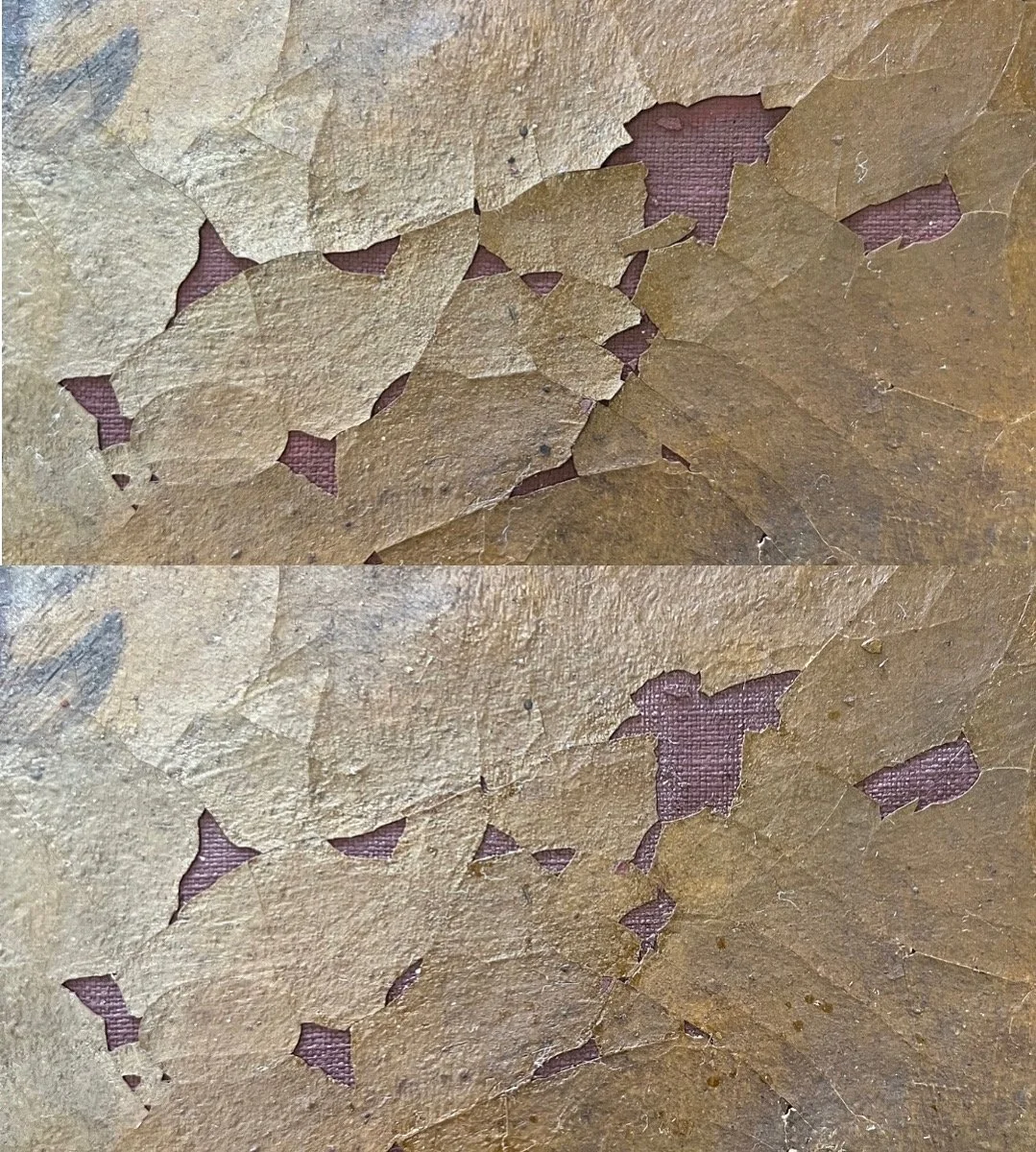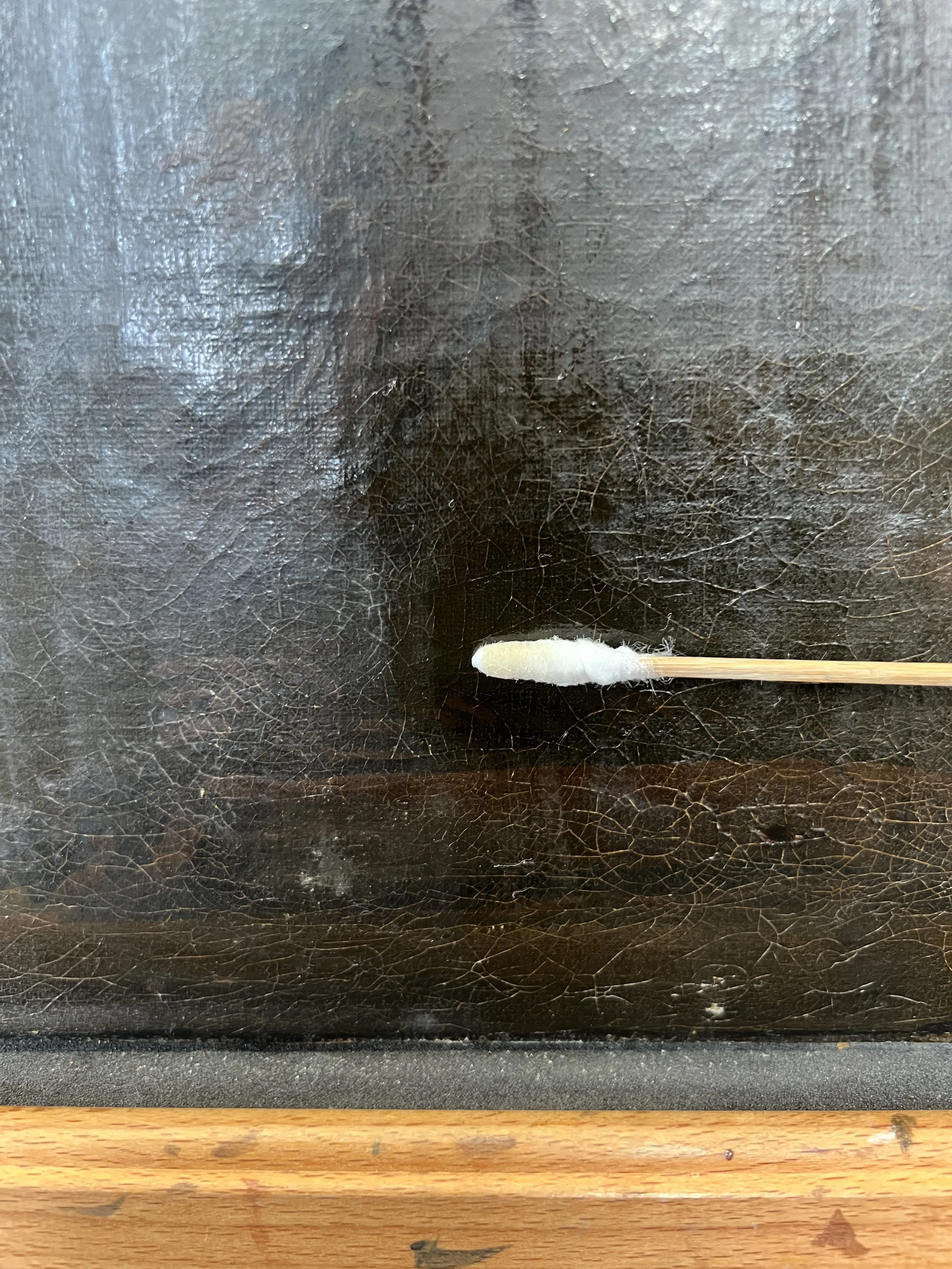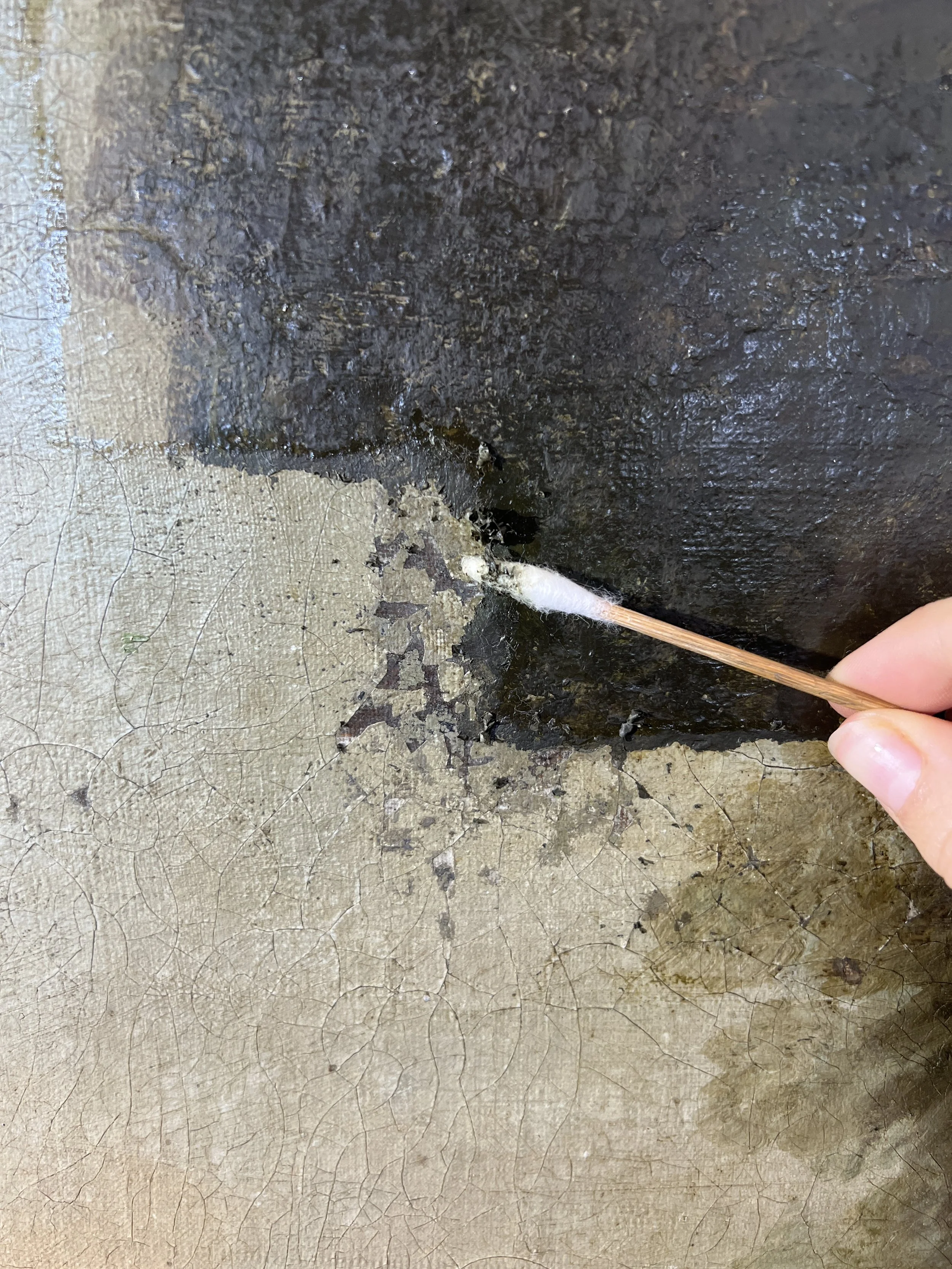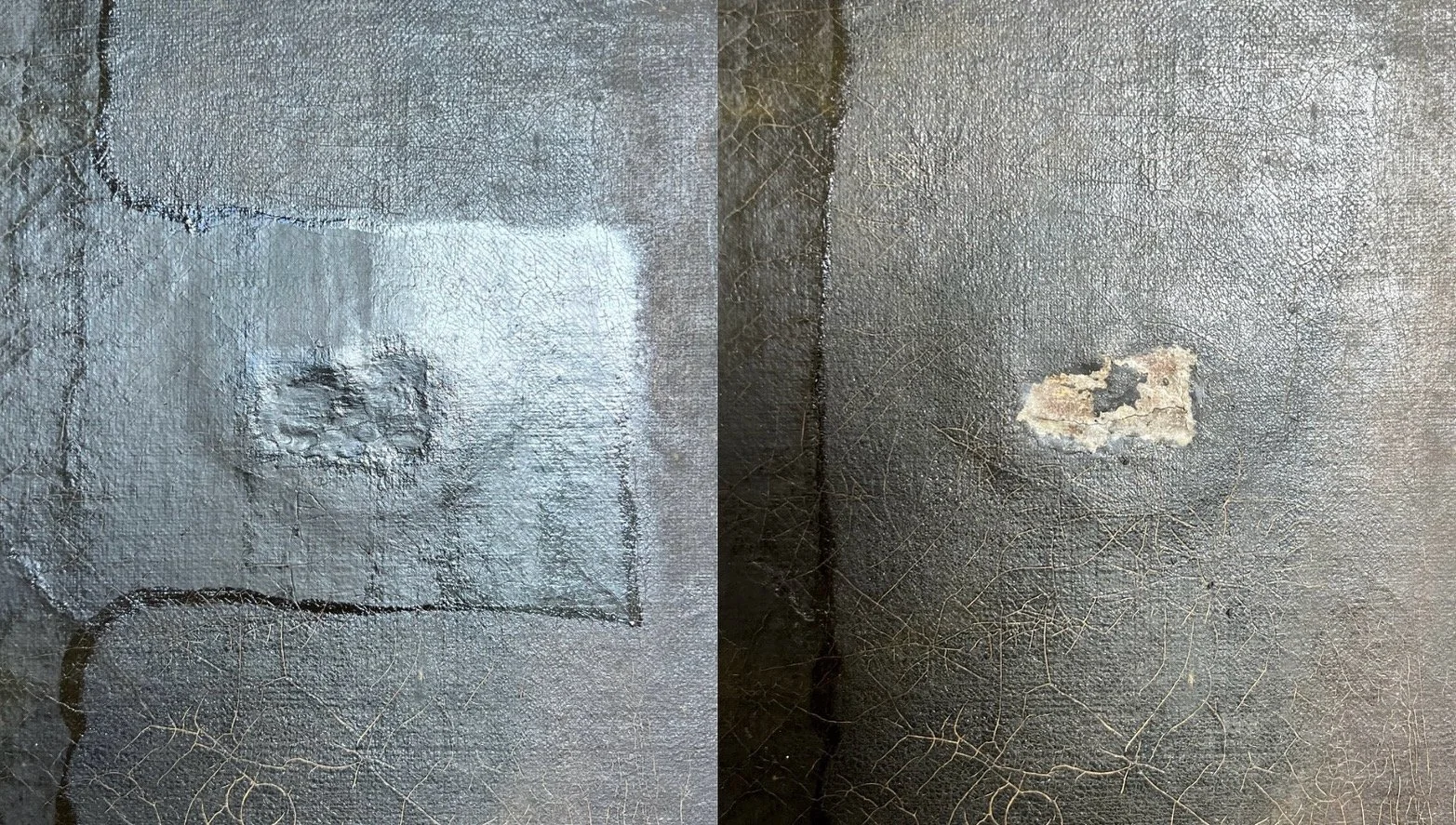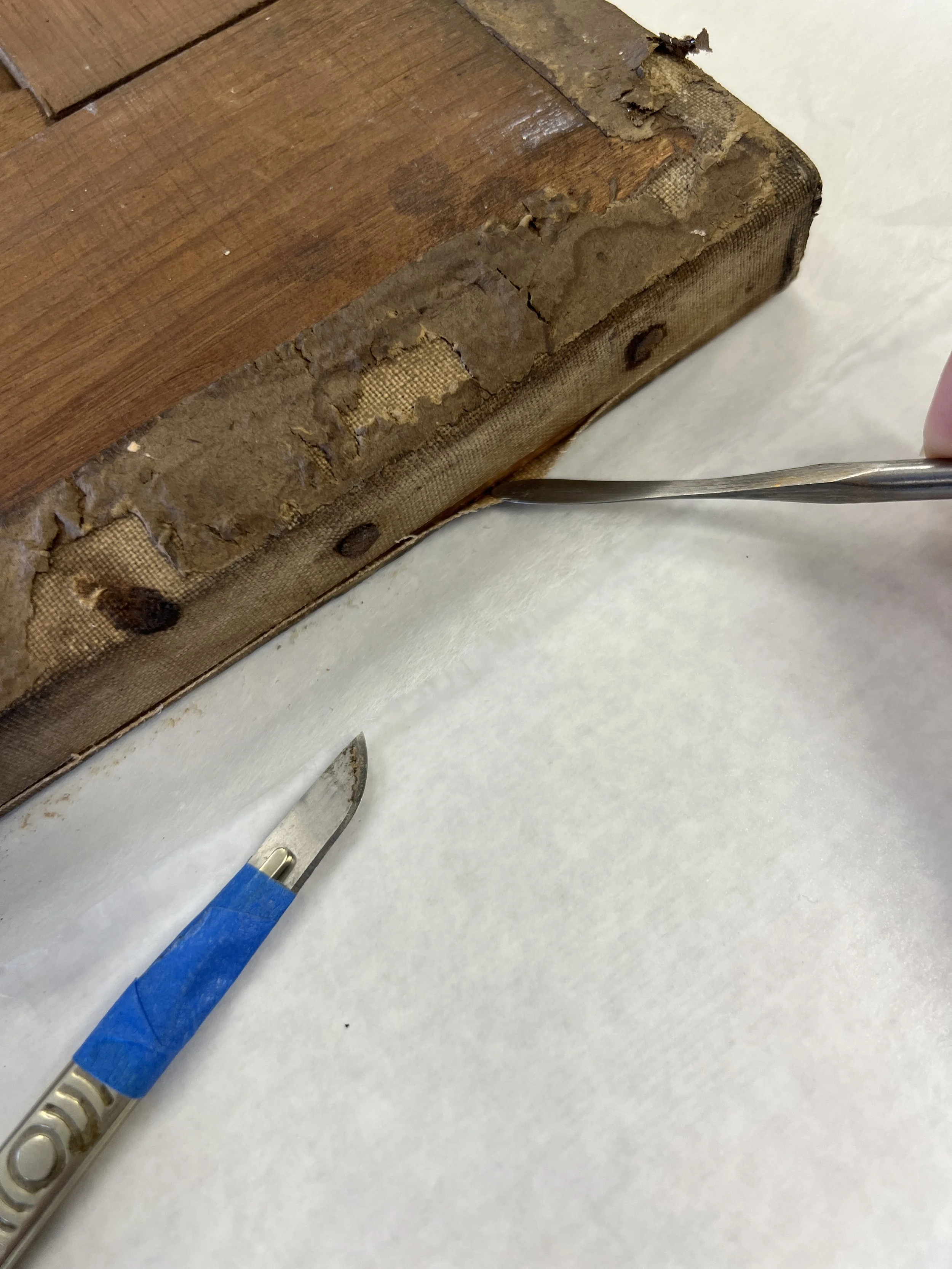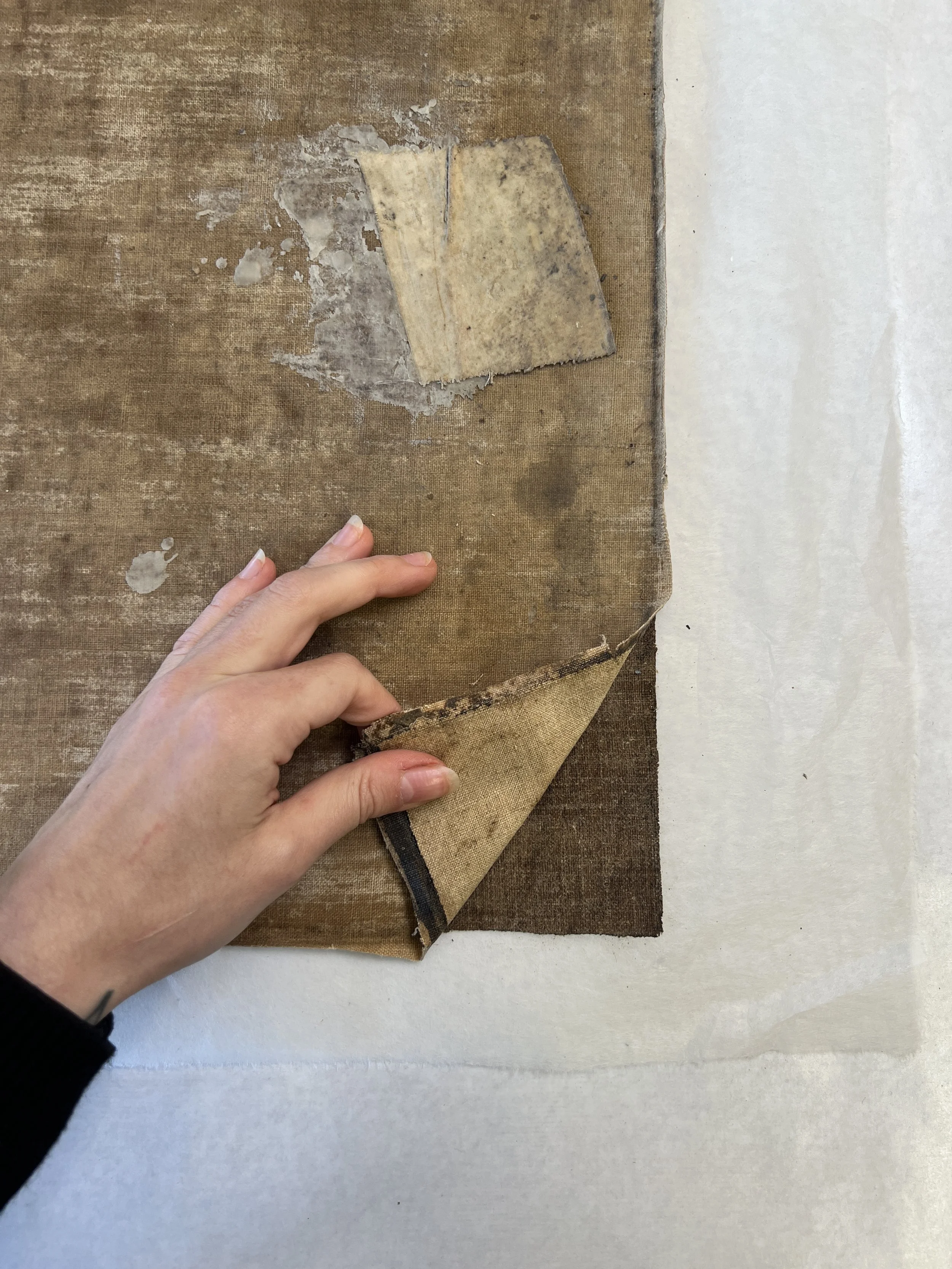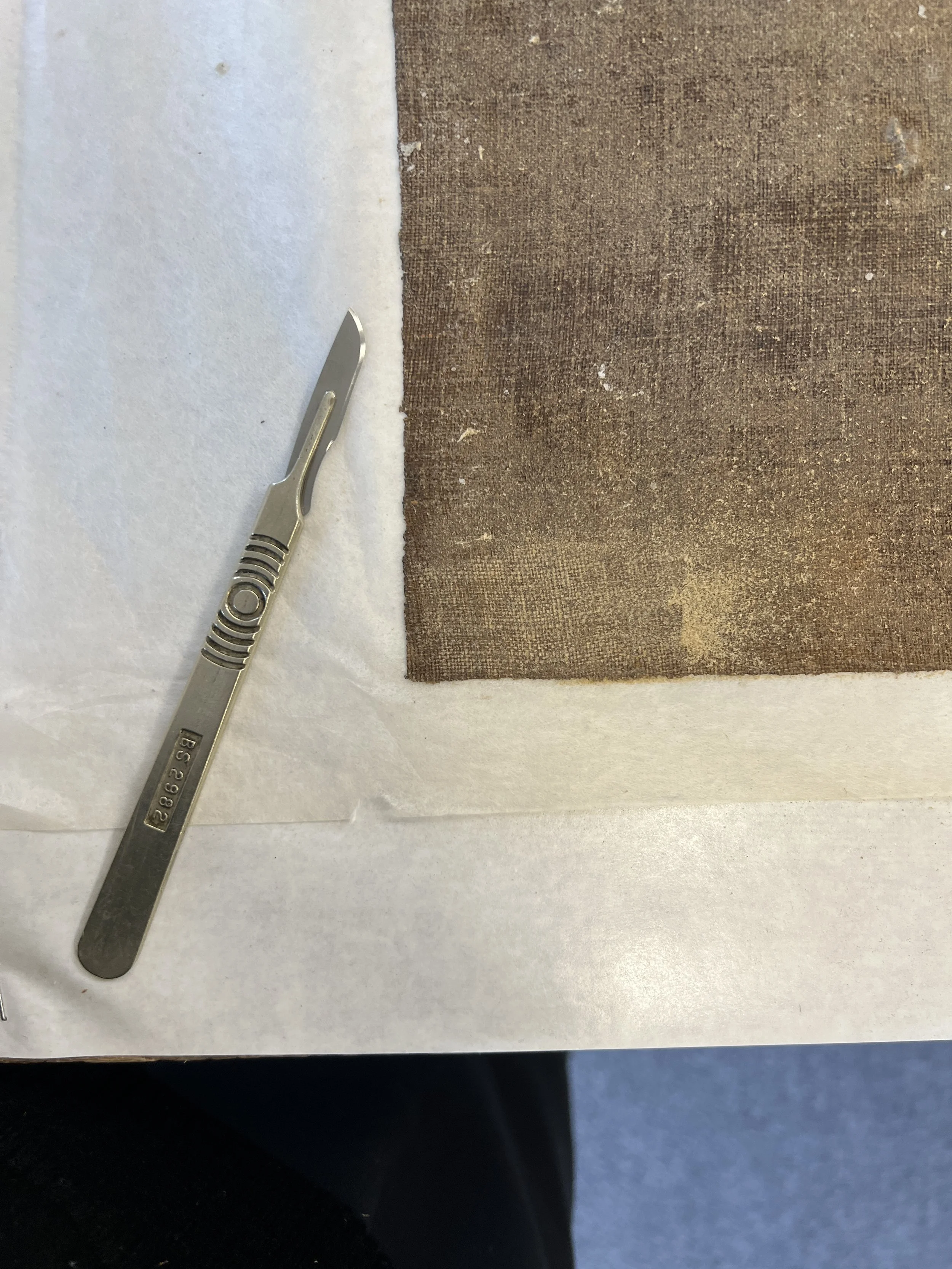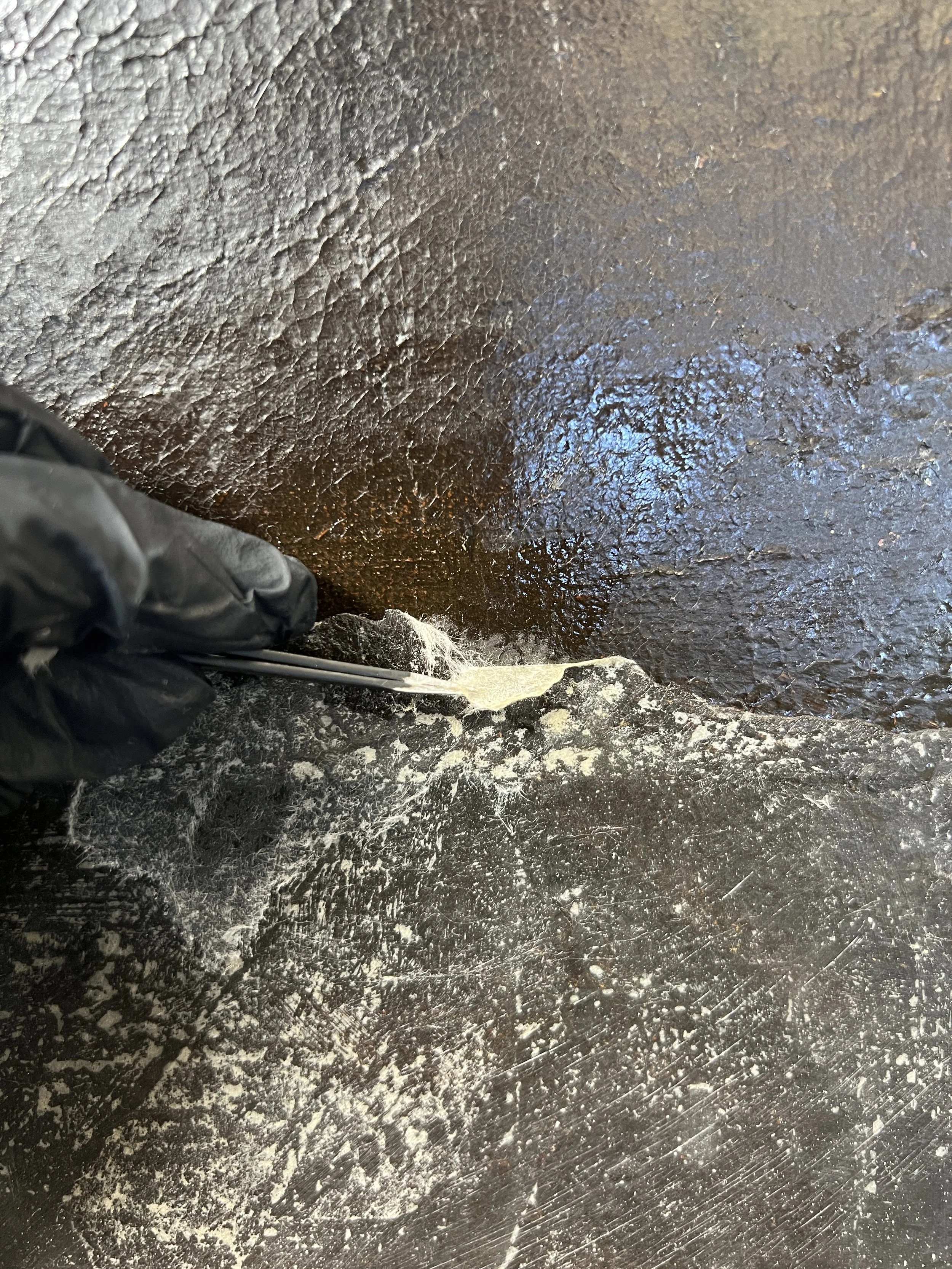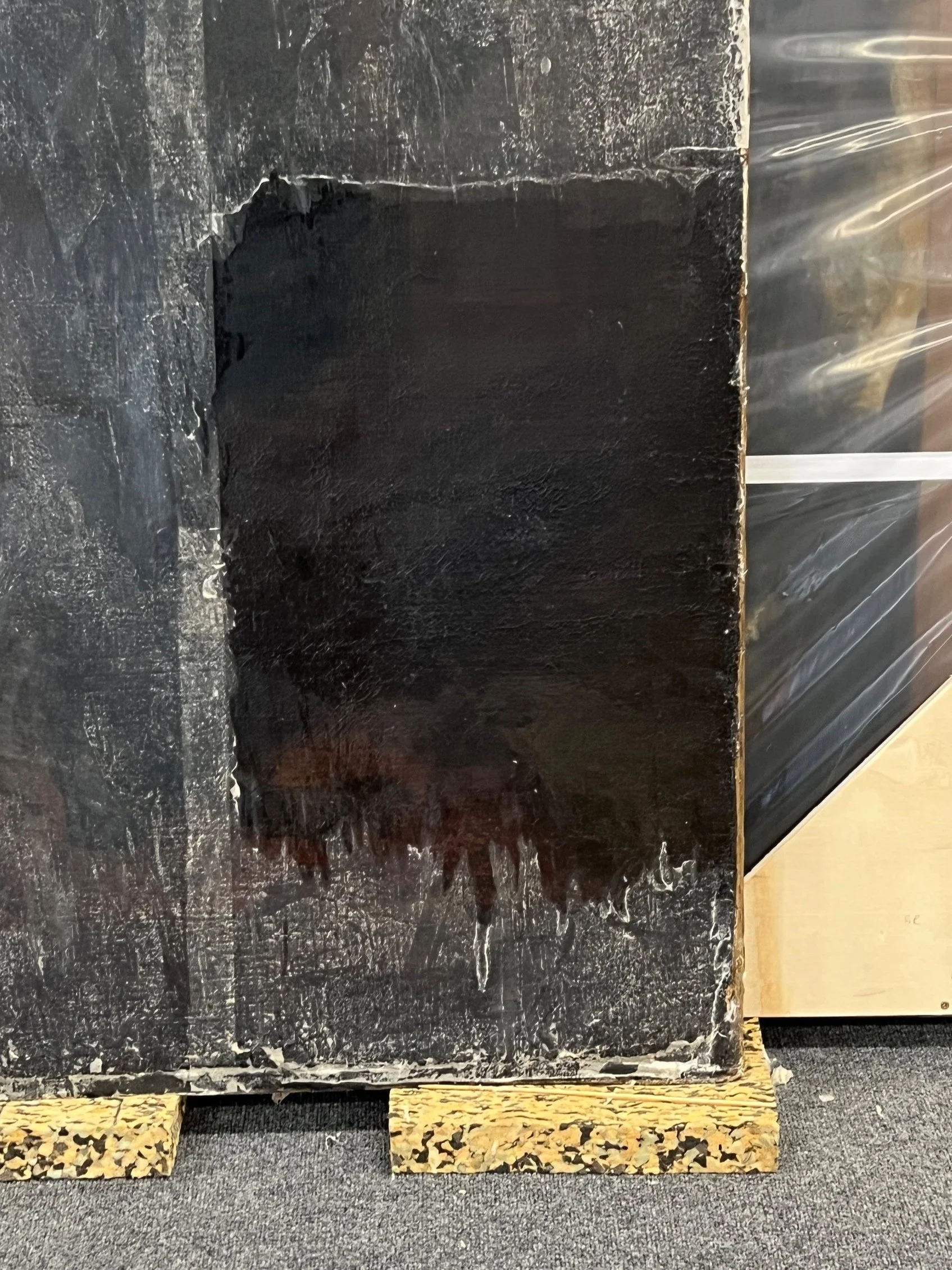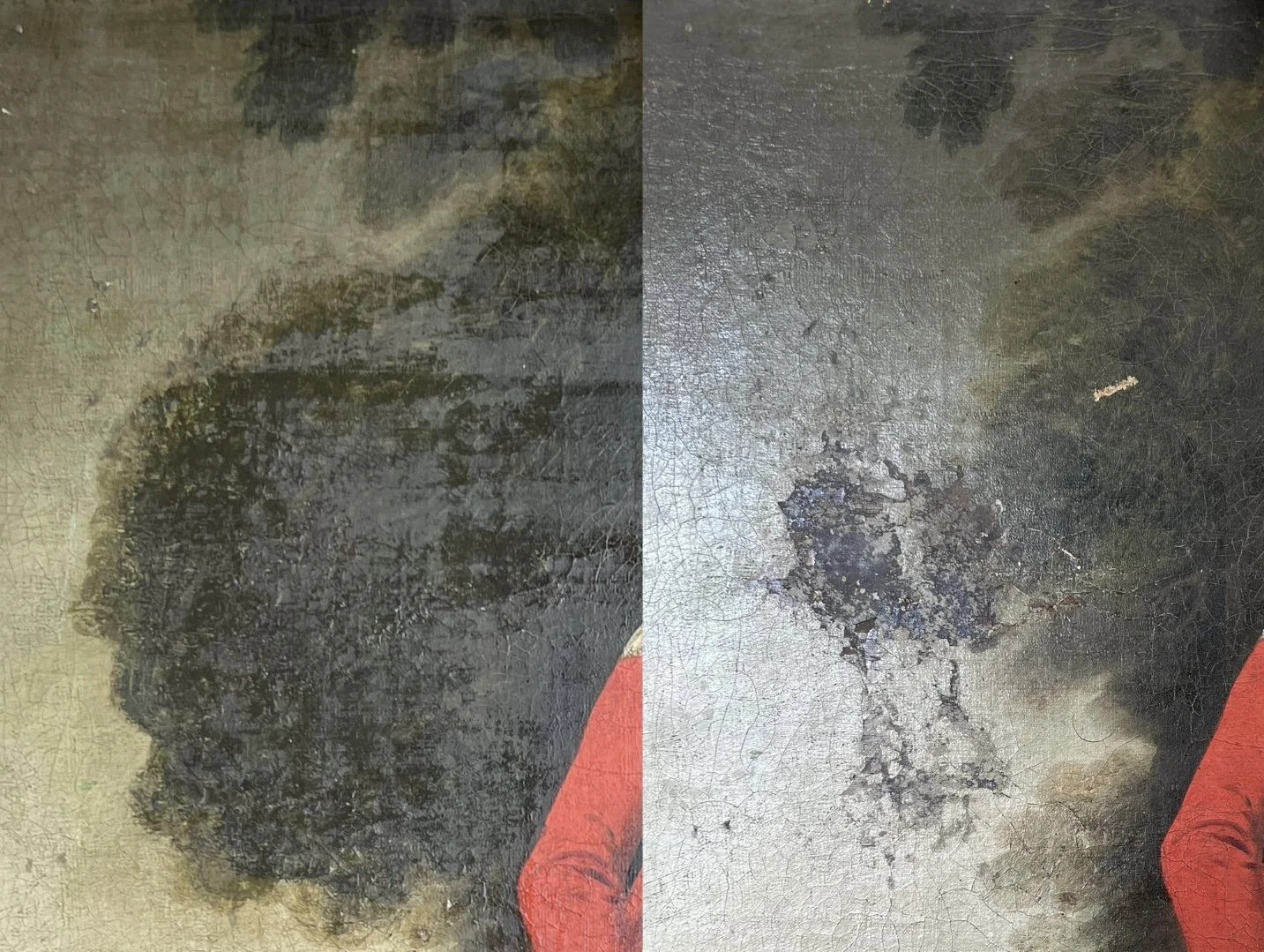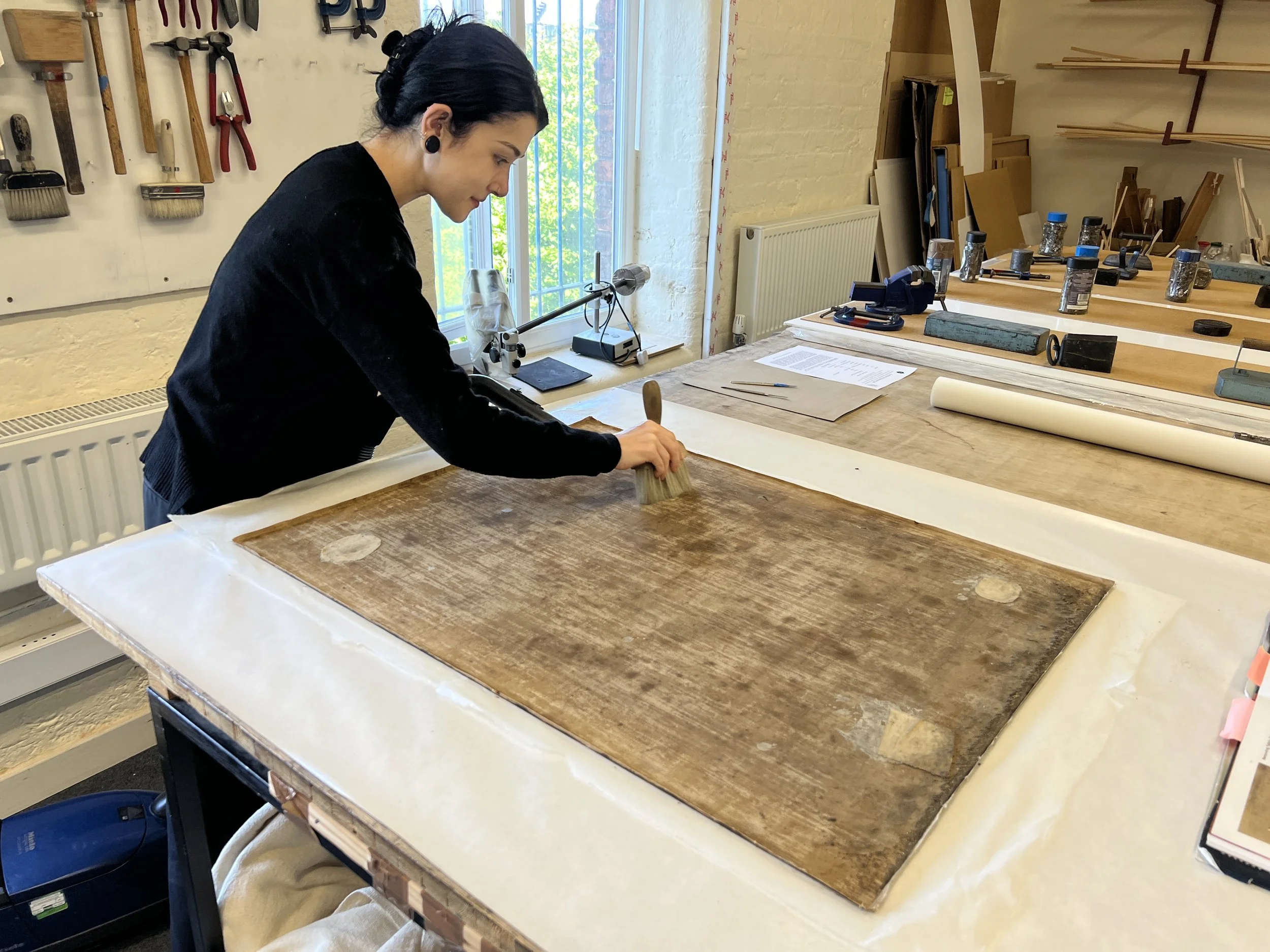A Placement in Private Practice: Reflections on My Time at Critchlow & Kukkonen
My recent placement at Critchlow & Kukkonen, a private conservation studio, provided an invaluable contrast to my previous experience in a museum environment. Working alongside Eeva Kukkonen, Lucy Critchlow, and Lucy Partridge, I was immersed in the fast-paced and varied world of private conservation, where the studio’s exceptionally skilled team gave me the opportunity to engage directly with a range of treatments and studio practices. Their generosity with their time and knowledge made a significant impression on me; they were consistently welcoming, thoughtful mentors, and their guidance shaped a deeply enriching experience.
One of the key treatments I participated in involved a structurally compromised 17th-century French oil painting on canvas. The painting exhibited extensive cupping and flaking, with insecure paint along areas of previous mechanical deformation. My initial task focused on consolidation of the lifting paint layer, using an adhesive with a heat spatula through silicon release paper to return the flakes to plane.
Following a successful consolidation, I assisted in the preliminary stages of planar distortion correction. This involved gentle humidification of the canvas in localised areas under weights and dampened blotting paper. I was able to observe the decision-making process around selecting the appropriate level of moisture and pressure to avoid introducing stress to adjacent consolidated areas.
A second major treatment involved a 18th-century portrait of a British military figure. The painting had a thick, streaky, and discoloured natural resin varnish, evidence of past lining and previous interventions, and numerous areas of structural and aesthetic instability. My involvement began with surface cleaning, carried out using dry methods on the reverse and tested aqueous solutions on the front. This was followed by removal of the varnish layer, performed using UV light alongside various solvents to ensure minimal disruption to the original paint film.
Following varnish removal, the painting required facing prior to structural intervention. I assisted with the application of Eltolene tissue facing adhered with an adhesive to secure vulnerable paint areas in anticipation of the removal of the painting from its stretcher and the additional removal of the deteriorated lining canvas and patches. The de-lining process was carried out mechanically, following with the use of scalpels to remove the lining adhesive.
Alongside practical work, documentation and reports were complied, including treatment reports and photographic documentation of processes. These reports followed a concise and client-accessible format, tailored to the needs of private practice.
I also contributed to streamlining their digital infrastructure, which included reorganising and optimizing storage systems and resolving redundancy issues regarding temporary system files that were affecting the studio’s digital storage efficiency. This exercise, though seemingly administrative, reinforced the importance of maintaining accessible, secure, and well-structured documentation systems in small-scale studios where time and resources are often stretched.
This placement has served as an important counterpoint to my earlier experience at Brighton, where the structure and scope of conservation work followed the rhythms of a public institution. In contrast, the studio at Critchlow & Kukkonen was far more fluid, client-driven, and reactive to the demands of ongoing treatments. The diversity of materials, timeframes, and workflow made each day dynamic and unpredictable. There was also a different kind of intimacy to the work; with just three conservators in the studio, knowledge sharing was constant, and the collaborative atmosphere meant I was able to observe, ask questions, and receive immediate feedback.
Overall, my time at Critchlow & Kukkonen has been one of the most formative experiences of my training so far. The opportunity to work so closely with experienced professionals across a range of treatments, coupled with exposure to the business and logistical aspects of running a private studio, has expanded my understanding of the conservation field as a whole. It has reaffirmed my interest in pursuing work in both institutional and private contexts and has made me far more aware of the nuanced skill set required to work independently or in a small team. I am grateful to Eeva, Lucy C., and Lucy P. for their mentorship and generosity throughout.



